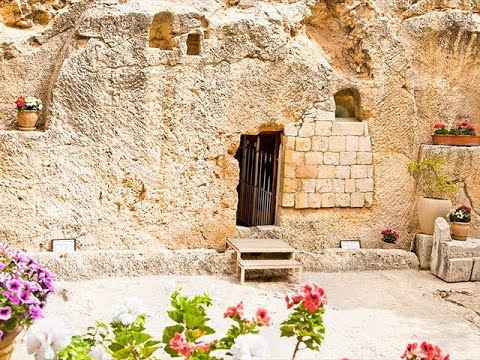Exploring the Significance of the Garden Tomb
Hello, my name is Richard Kent. I wanted to discuss the Garden Tomb—a place of profound significance. For me, the Garden Tomb holds immense importance, and I’ve been fortunate to visit it numerous times with my wife.
The Garden Tomb: A Place of Contemplation
While I cannot definitively assert that the Garden Tomb is the exact location of Jesus’ burial, several compelling factors suggest its plausibility. Firstly, historical accounts mention that Jesus was crucified at Golgotha, meaning “skull.” Remarkably, the terrain of Golgotha resembles a skull, reinforcing the potential authenticity of its biblical significance.
A Tomb of Unusual Size and Location
Adjacent to Golgotha stands a tomb—a substantial structure with a large stone covering its entrance. This tomb, situated in a vineyard, aligns with biblical descriptions of Jesus’ burial site. Notably, vineyards in the Middle East require ample water, and the Garden Tomb area boasts a significant water supply, enhancing the plausibility of its association with Jesus’ burial.
Historical Context: Roman Practices
Furthermore, Roman crucifixions often occurred along public highways, ensuring high visibility. Golgotha’s proximity to the Via Maris, a major thoroughfare, aligns with historical practices, increasing the likelihood of its authenticity.
Intriguing Discoveries: Roman Stake and Sealed Stone
Moreover, visitors to the Garden Tomb may notice an ancient Roman stake near the entrance. This artifact, believed to be the original seal for the tomb’s stone, adds an intriguing layer to the site’s authenticity. While its definitive connection remains uncertain, its presence evokes contemplation.
A Symbol of Resurrection and Faith
Despite uncertainties, the Garden Tomb symbolizes the central event of Christianity: the resurrection of Jesus Christ. As the inscription on its door proclaims, “He is not here, for He has risen.” Indeed, the resurrection is the cornerstone of Christian faith, offering hope and redemption.
Conclusion: A Place of Reverence and Transformation
In conclusion, while we cannot definitively confirm the Garden Tomb as Jesus’ burial site, its historical context and significance invite contemplation. For me, it represents the epicenter of faith—a reminder of Christ’s sacrificial love and triumphant resurrection. May this sacred place continue to inspire reflection and faith in the hearts of all who visit.
Thank you for listening, and may God bless you abundantly.
